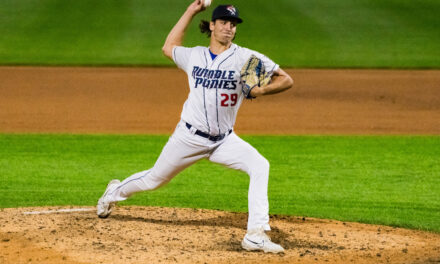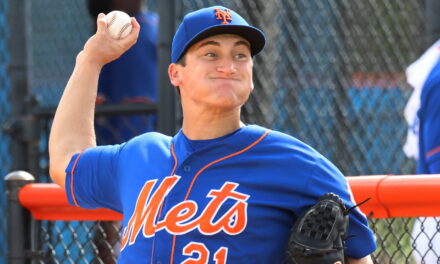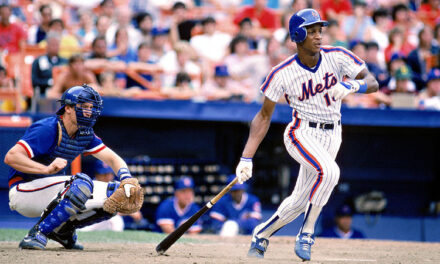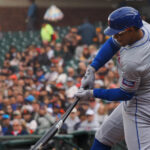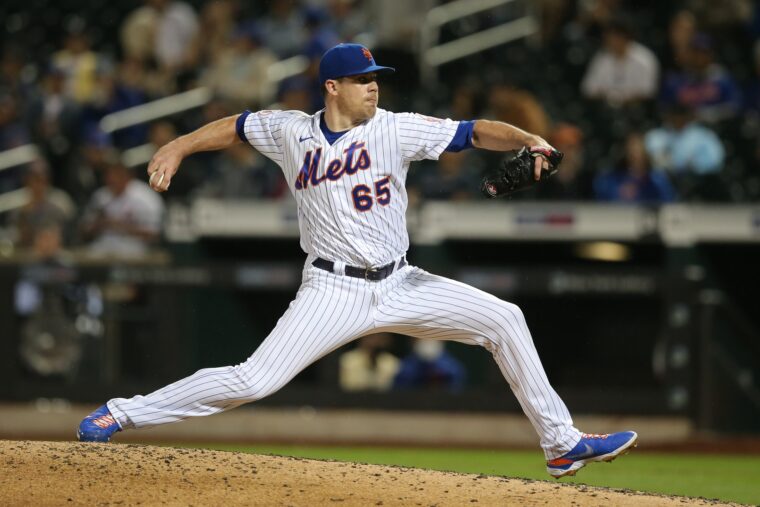
Credit: Brad Penner-USA TODAY Sports
When right-handed reliever Trevor May signed with the New York Mets in December 2020, he did so because of two major reasons: reuniting with Jeremy Hefner and being enthralled with the idea of playing for owner Steve Cohen.
May, 32, had spent his entire major league career with the Minnesota Twins after being drafted by the Philadelphia Phillies in the fourth round of the 2008 MLB Draft. He was dealt to the Twins, along with pitcher Vance Worley, in the trade that sent outfielder Ben Revere to Philadelphia during the 2012-2013 offseason.
During his six-year tenure with Minnesota, May experienced time as both a starting pitcher and reliever before settling into the back-end of the pen, and had his breakout season in 2019, appearing in 65 games and posting a 2.94 ERA with a 29.7 K%.
While with the Twins, May got to work with Jeremy Hefner, who joined the Twins in 2017 as an advance scout and was promoted to assistant pitching coach for the 2019 season. Following that season, the Mets hired Hefner, who pitched for the club from 2012-2013, to be their pitching coach.
When May became a free agent following the abbreviated 2020 season, reuniting with Hefner was a big priority for the hard-throwing righty.
Along with being back under the tutelage of Hefner, May was excited about the Steve Cohen-owned Mets, and the new culture that he was bringing to the organization. He cited Cohen’s excitement as a reason he was enchanted by the Mets, and how he was different than most other owners in the sport.
In May’s first season with the club, he appeared in a career-high 68 games, posting a 3.59 ERA with a 31.2 K%. He was in the 87th percentile in whiff percentage and posted at least a 30% whiff rate on all three of his pitches that year (33.3% on his changeup; 33.2% on his 4-seamer; 30.1% on his slider).
Coming into the 2022 season, May was looking to add a pitch to his arsenal that would add more depth that would play well off his four-seamer.
He added a split-changeup and had good success with the pitch in a limited capacity this season before going on the injured list. May’s split-changeup recorded a 33.3% whiff rate and had 31.5 inches of drop compared to 22 inches of drop on his changeup in 2021.
May last appeared on a major league mound on May 2nd and acknowledged he hadn’t been feeling comfortable pitching this season. He was shut down with a stress reaction in his right triceps and has since been working to return to the mound for the second half of the Mets’ season.
I had the privilege of speaking with May during his rehab, to talk about his transition from starter to reliever, how he utilizes data for game planning and his passion for video games.
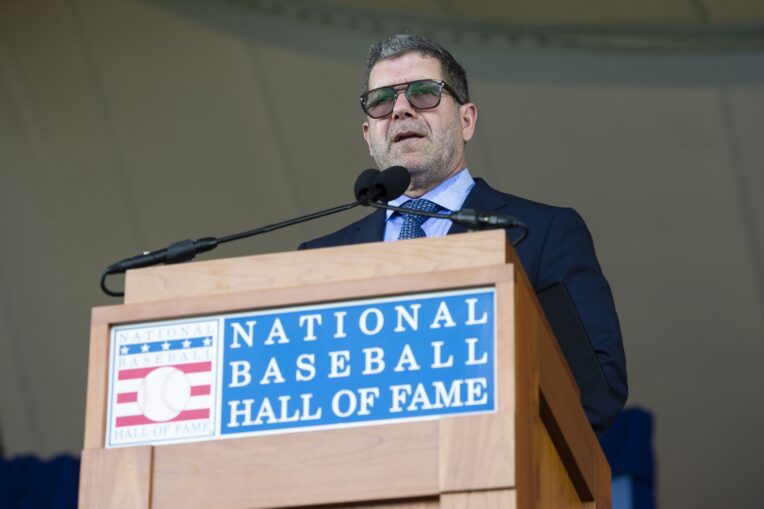
MMO: Who were some of your favorite players growing up?
May: I was a huge fan of the Mariners growing up. The ’95 and ’01 teams have a big space in my heart because I was just getting into baseball in ’95 and I was twelve in ’01; that’s when you’re deciding what sports you really like.
I would separate this into two categories. My favorite pitcher from that time is probably Randy Johnson, my favorite hitter is Edgar Martinez, and obviously The Kid and A-Rod.
I’m always a fan of like the, I don’t wanna say role players, but the guys who were good players but weren’t the faces like Dan Wilson. Aaron Sele had an incredible year in ’01 that doesn’t get talked about where he won 15 games.
I told Joey Cora about how my family always loved to watch him play when he was with them. He did not expect that when I met him in spring. [I have] a lot of fond memories watching the Mariners.
MMO: At what point during your development did you start focusing primarily on pitching?
May: That happened during my junior year. I got recruited to go to the University of Washington between my sophomore and junior year of high school, which is usually a year earlier. I went to one of their baseball camps and their head coach never heard of me and didn’t know where I came from. I just started my growth spurt a bit; I’d grown a lot.
I always threw hard even when I wasn’t as big. I think I was in the high-80s at sixteen, and I was like six-foot-three and growing fast.
He was like, “This guy could be a thing.”
Towards the end of my junior year, we were verbally committed, and I was going to be a pitcher only. At that point I thought, I’m going to college to be a pitcher only, what’s the point [of playing other positions]?
I played third, a little middle infield, and outfield. We had a lot of JUCO players and a couple of D1 players. We had a bunch of people with positions that were pretty good that were probably going to play beyond high school. They didn’t need to jam me in anywhere because I wasn’t going to play.
MMO: You mentioned that as a teenager you were already throwing in the high eighties with your fastball. When did that extra eight-to-ten miles of velocity start to come into play for you?
May: The year between my junior and senior is when I was just consistently in the 90s, and it was strongly against junior college teams. That’s when the swings-and-misses started happening.
My senior year I had one game where I struck out 19 in seven innings. My strikeout record at my high school will never be broken; I don’t think anyone can even throw that many innings anymore.
I was [averaging] two [strikeouts] per inning for my entire senior year, and that was because Washington’s not necessarily a hotbed, and we only had five teams in our league because of where we were located in Southwest. I threw back-to-back-to-back no-hitters at one point.
I was kind of at a higher level, just throwing probably 89-93 as a senior, sitting 90-91. The summer before that year, I had run it up to 94-95 a couple times in some travel team tournaments with my team in Seattle, which I didn’t grow up anywhere near Seattle. I literally never practiced with them, I just showed up at the tournaments and pitched.
I got some adrenaline a couple of times and then my senior year in the playoffs I got a couple of outings where I was sitting 93-94. Obviously, I was six-foot-five, 220 pounds, so scouts were like, “He’s going to put on 25 pounds, so high velo.” I got to pro ball and that’s exactly what happened.
As a starter, I got very mechanical. When I got moved to the bullpen, I kind of let some mechanical stuff go that I thought I needed that I didn’t. Then my velo jumped another four or five miles per hour.
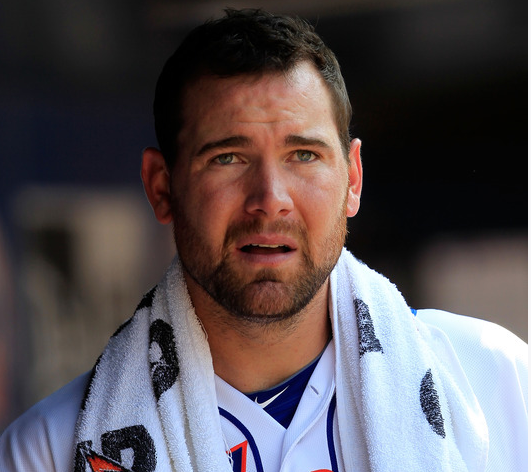
MMO: At what point did the Minnesota Twins approach you about transitioning to the pen, and what were your initial reactions?
May: The original move was, and you’ll know about this person, Mike Pelfrey had been throwing really well for us at that point. We also had Tommy Milone, who was kind of like me, up and down a bit. He was like Cy Young-caliber for his last six starts or so. We had Ervin Santana who was on an 80-game suspension coming off.
Tommy’s a little older than me and he was lights out. He was like the number one at that time. Mike was on a contract and throwing his best in a while, and I was a rookie.
They were like, “We don’t want to send you to Triple-A because you’re throwing well.” I had a clunker right at the end there, but before that, I was starting to kind of get my groove and get an opportunity to go deeper into games. I was averaging six innings a start, which was huge. I was really happy with that.
Then I got moved to the pen and something happened to Glen Perkins and we had Kevin Jepsen setting up. He became closer and I kind of slowly got slotted into the eighth inning because my velo jumped immediately to 95-96 from 92-94. My strikeout numbers were there and I think that year (2015) I was used 32 times out of the pen and made 16 starts.
I think I threw like a 2.80 [ERA] or something out of the pen that year, which was really good. The next year I had Paul Molitor as manager. The next year I kind of got a cursory glance as a starter again because they’re always like, we don’t want to give up on someone being a starter, especially when they’re doing well.
They had Tyler Duffey come up to be a starter the year before and he started throwing really well. We were competing, but they thought that I would translate to the pen better than he did. I started again at the end of it; in ’16 I was in the pen and I had a back issue, very similar to what I have now. It was a stress reaction because of mechanical things that I was doing to throw harder and figured that out over a year.
I had Tommy John in ’17, and I came back as a starter again and saw a bunch of young guys who were starters on the 40-man ready to get called up. So, I said, ‘Move me to the bullpen because I’m going to get optioned to Triple-A if I keep doing this.’ A month later, I was back in the big leagues closing the games.
MMO: Being moved back and forth from starter to reliever must have been challenging not only with your routine and preparation but mentally as well. Was there anything specific that was the most challenging for you?
May: Honestly, I loved it. I really bought in because I thought I could thrive in the roles. A lot of guys become relievers and are like, I’m good throwing in the sixth, seventh, whatever. I wanted to close from the minute I did it, I just thought it was so fun.
I let the day-to-day stress of things fall off because it didn’t really matter as much. When you get older, getting your body ready to go every day and being mentally like, I’ve got to go, and not only do I have to go, I have to be super good and ready to go today. Even on days when you don’t even want to get out of bed. That is probably the biggest hurdle that a lot of guys struggle with.
It’s funny, talking with Seth [Lugo] for example, Lugo still like would love to throw multiple innings an appearance. He really liked the way that that process of pitching is. You’ve got to buy in and that’s hard to do at times.
Honestly, starting is very, very hard in its own right. That day after, my God, it’s a cushy job. [Laughs.] It’s great, you are required to do nothing and sometimes you need that. I do miss that a little bit and obviously, starters are paid about three times as much money on average.
MMO: I was going to ask you about that.
May: That was always my dad. My dad’s like, “Don’t give up on it. You only have to be a number four to make real money.” You just get to the point where you’re like, I’m going to do this. This is the opportunity I get, I’m going to buy into this thing and I’ll just make as much money as I can doing this because I enjoy it.
There has to be fun involved. We’re still playing a sport and if there’s no fun, it’s really hard to do. There are not a lot of jobs like that where it requires fun, where it’s a fun thing to do on your own time and you can do it as a job. Everyone doesn’t get that opportunity, so you want to take advantage of it in that way as well.
MMO: Can you talk a bit about undergoing Tommy John surgery in 2017? You suffered the injury while pitching against Team USA in an exhibition game, right?
May: Yeah, they were out there on their Florida tour and we were the last team they played and I started against them. I was throwing really well. My claim to fame is that I did punch out [Nolan] Arenado with a curveball with no UCL; it had gone before that. I had like three strikeouts after the fact and I threw two and two-thirds innings and after I blew out.
I thought I pulled my tricep or something. I thought I was either seriously injured and was going on the DL, or it’s nothing or something very minor and can work through it because I was competing for a fifth spot and didn’t want to give up the opportunity to play in the big leagues again. If I was going to start, I wanted to start in the big leagues. I just went for the shot.
I didn’t feel it before, it just happened out of nowhere. I felt a little like flexer tightness early warming up and it loosened up and I was okay.
Chris Gimenez was catching me and he said, “Dude, you were throwing really hard.” I was 95-96 as a starter, which isn’t me usually. And just one time it felt like I had pulled something and I went in the training room and was like, let me just loosen this up and then go back out and pitch.
I came back in the next day and was like, no, it’s gone. I couldn’t put my arm on the center console of the rental car I had! It’s a random thing, man. They just go sometimes and a muscle just stops working because it’s like, okay, I’ve had enough.

MMO: It appears that your slider started becoming more of a weapon for you in 2019, as you used it almost 15% of the time, and was your put-away pitch 20% of the time. You also saw a huge jump in vertical movement on your slider from 2018 (33.8 inches) to 2019 (43.2). Was that a pitch that you continued to work on?
May: The adjustment to the slider was a good one. I kind of messed with the grip a bit. It was a variation of Ervin Santana’s slider. I just started throwing it in games after the All-Star break, and I remember I gave up a homer on a curveball because I always tried to throw a hard curve, but it was always high seventies.
Basically, I throw a flat number to spike it, like Pedro Martínez used to do. For whatever reason, he had a lower arm slot so he was able to get more leverage on it. I was more over the top, I had 12-to-6 and if it was 80 [mph] that was the hardest I could ever throw it.
So, 2019 is kind of when curveballs went out of vogue and guys could just crush them because of the way they were. I was already kind of on the fence with it and I had my slider; I just wasn’t confident to throw it for strikes.
I remember winning and going in and telling Hef (Jeremy Hefner), ‘I’m thinking about just bagging it (curveball) completely and throwing the slider.’ We talked to Josh Kalk, the head analytics guy, and he was like, “I was just coming to tell you that. It breaks close to the same amount but it’s seven miles per hour harder, and it’s just way better. Throw the crap out of it.” And then Wes Johnson (former Twins pitching coach) said, “That’s all I needed to hear. Go throw it. Do what you need to do.”
It took me a couple of weeks to get it over the plate. In my head, I’m always like, Slider, slider, but I didn’t have any horizontal movement; I was just throwing a hard curveball. It was more depth than horizontal sweep. I think it kind of just happened abruptly.
When you throw a new pitch, when you are kind of a developed adult, your arm is going to start to adjust based on that movement you’re making over and over again. Over that last year and a half, I’d been trying to find a consistent way to throw it. The velo is consistently there and everything.
I did the same thing this year with the splitter. As soon as I started throwing it and saw the metrics on it, I knew that it could, as I get more comfortable, get more and more elite. It was already really good right away.
That’s all I needed to know to start to throw a new pitch because the other changeup wasn’t serving me as much as it used to. It used to be my best pitch as a starter, but now it’s gone.
MMO: So, you were working on that new slider grip mid-season?
May: Yeah. I literally showed up and I was like, ‘What if I threw this?’ I threw a couple in a game and they got metrics on it and they were just balanced. They were like, “Dude, what was that?”
I threw a slider at the time but it was just bad. I changed the grip on the slider and threw it just as much. I threw like a cutter thing, little depth-y, didn’t really cut at all. It was just a little breaking ball that was high eighties as a variation and I threw it like two-to-three percent of the time. Then my curveball started melding in, so it started to get harder and break less. They were like, “They’re starting to meld in and so your slider is better now. Just do that.”
MMO: It has to be tough to adjust a pitch like that mid-season.
May: It was just one of those things where I just did it. I’m going to be honest, at that point I had been scuffling a little bit in the middle of the year. I had two or three blown saves in four or five outings, which was uncharacteristic for me.
We kind of had a rotating group, a lot of guys were throwing in high leverage [situations]. I got shuffled to the back of the group for two or three weeks, which gave me an opportunity to go out, and if we were down five or I’m eating an inning I can throw a couple of sliders in the game and get a feel for it and throw a little bit on the side.
In Major League Baseball, sometimes you need to struggle a little bit so you can take the foot off the gas. You’re able to work through whatever it is that is causing it. You need that. I got that opportunity there and then I got comfortable with it and just started ripping them.
The changeup was good, too. I had found some velo that I hadn’t had previously and I started to throw the hardest I’ve ever thrown in the second half of that season. That caused some confidence and got me some opportunities. I started to develop myself as a pitcher like that.
MMO: I know you’re a big data guy and also utilize wearable tech as well. How do you go about incorporating all of that data into your game-planning?
May: That’s a very good question because that’s always changing. For me, how I feel and how my body feels is really going to dictate how well I’m able to command stuff on the mountain. I’m focused more than anything on feeling as good as I can, as much as I can.
When it comes to game-planning for guys, it’s so hard because you can get bogged down by so much information. A guy like Max [Scherzer] takes in so much info when he prepares for guys. That’s something you can do as a starter. It becomes counterproductive at a point for a reliever because you’re doing it every day.
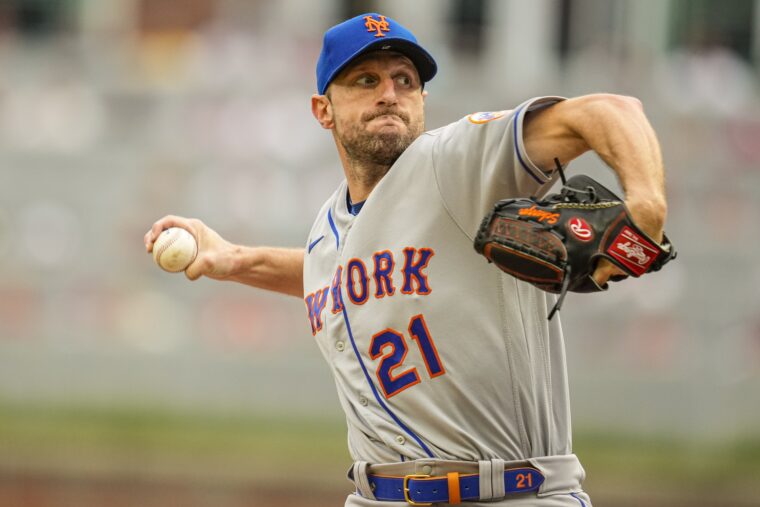
Credit: Dale Zanine-USA TODAY
I developed a simplified system and I did a video on that too, where I break down where my defaults are, and where I can throw my pitches the most often. And I use that as a baseline. I call it SPOTS; it’s literally the strike zone. Basically, you create where your intended heat map is for those pitches. These are the things that when I throw my slider and it’s good, it’s here. When I throw my changeup and it’s good, it’s here. And when I throw my fastball and it’s good, it’s here. If I’m trying to go up and in, I need to be here; you’re creating a clear picture in your head of this is where I want the ball to go.
You think of it that way and overlay that against what they (batters) do well, and you find where your strengths match with their holes. And if they don’t have them like [Juan] Soto, for example, then you just go risk-reward. What’s the situation? Where is he? Am I just pitching around him? There’s only a couple of those guys, Miguel Cabrera was one of those. I’d rather put him up first because he’s just going to clog the bases, and he’ll tell you that. That’s a good move.
For the most part, I really would go after guys with my best stuff. I’m a swing-and-miss guy, I need to be able to get a situation to come in, first and second one out and go get a couple of punchies and leave the defense out of it because you know, bad stuff doesn’t happen when guys strikeout. I have the ability to do it. I’m confident in that.
I go out and I think that I’m going to throw to their holes. I’m throwing to holes here, and if that takes more pitches so be it. I’m going to attack guys. I want to know what that is. I want to know where those holes are, and that changes every single year because of hitting technology and what ball we’re using.
This is why I get really heated about a lot of this stuff because this is my process. When you start adding all these variables there’s no way to tell what they are then a lot of this stuff falls apart. That gets frustrating at times, but it’s out of my control. No one seems to want to either listen and when you ask a question they (Major League Baseball) don’t really want to tell you the truth.
Don’t lie about it. That’s just kind of where we are in our game. The people that run it, unfortunately, they’re going to be around for a while. Longer than I am, that’s for sure.
MMO: Have you noticed a difference in the feel of the ball each year?
May: I mean, feel is so day-to-day based on weather, for example. If you’re sweating, you can’t tell how sticky a ball is because you’re sweating. Your hand changes wildly from hour to hour of how you touch things. I don’t think that’s super accurate, but I think that lately, to be honest, it’s been so egregious.
For example, earlier in the year you could tell when a ball was taken in the cold to the field or delivered and then taken from there and put in the humidor and then taken out of the humidor in the game. It’s soft because when it was put in the humidor, all of the looser wool that they already put in there because they want it to be softer, expands. And then it shrinks again when it goes back into a lower humidity area and it doesn’t shrink, the leather doesn’t shrink, just the wool does. There are these spaces and it’s not perfectly a circle anymore.
Trevor Williams has given me a couple of them and is like, “Dude, this feels like a tee-ball.” I was like, ‘Oh my God!’ There have been a couple of those. But again, humidors do that.
They did that to the bounce, the juiced balls. They expand the ball, the humidity gets absorbed into the wool, which is extremely absorbent, and then it expands. If you put it to more humid, then it kind of stays where it is or it expands even more. The ball actually feels harder, it’s not, but it feels that way. Or it feels tighter just because it’s still expanding because the humidity outside is higher than the humidor. That’s why the ball suddenly started flying again to an extent.
I don’t know if they just put other balls in, because they don’t seem to think they need to tell anybody or have any reason or actually act on any real information that they can divulge. Everything is a secret. They think they know that that’s what people want, so they just do it. They don’t like dealing with players and their opinions on a game that they play. And the people who make decisions have never played.
MMO: The best is when they do their own internal review and essentially say, we checked it out and everything’s fine. No issues here.
May: I don’t like being treated like I’m a toddler. I understand how the political game is played on their end; they don’t like bad PR. They don’t like bad PR but they’re some of the worst PR-trained people I’ve ever seen in my entire life. It’s hilarious sometimes.
The way that it kind of works is they’re just willing to kind of just unilaterally do things they’re willing to, but they’re not really willing to include us in the process in a collaborative way. We’re more of an obstacle to overcome than someone who can help. That’s how we’re seen and that’s how our relationship is now. I think that’s a really good way to put it.
The CBA kind of showed that we didn’t need to fight like we did. We were going to because that’s how we were seen, we’re seeing someone you need to fight with. That’s just an assumption that was made from the beginning. There was no way to be like, you know, I get it. You don’t want to divulge numbers? You guys got stuff leveraged everywhere. I get it. I know why, but what can you give? I’ll stop asking but give me something.
But we won’t do that because we’re playing in the social contract game where we both have mutual respect and they’re not. How do you talk to someone like that? You don’t.
When it comes to the balls and all the rule changes and things, I’m a big person that if you can give me a clear and concise reason and proof of why you feel the way you feel, and maybe you’re going to do that, then I’m good. But no one seems interested in giving any of that information, in any coherent way, ever.
MMO: I think we’ve seen over the past several years with the changes in the baseball and CBA negotiations just how close to the chest Major League Baseball keeps things and tries to defer any potential issues away.
May: No, they sent us headphones, we’re good, man. They gave us some Bose right at the beginning of the season with a nice letter, so everything’s great now because baseball players don’t have headphones. [Laughs.]
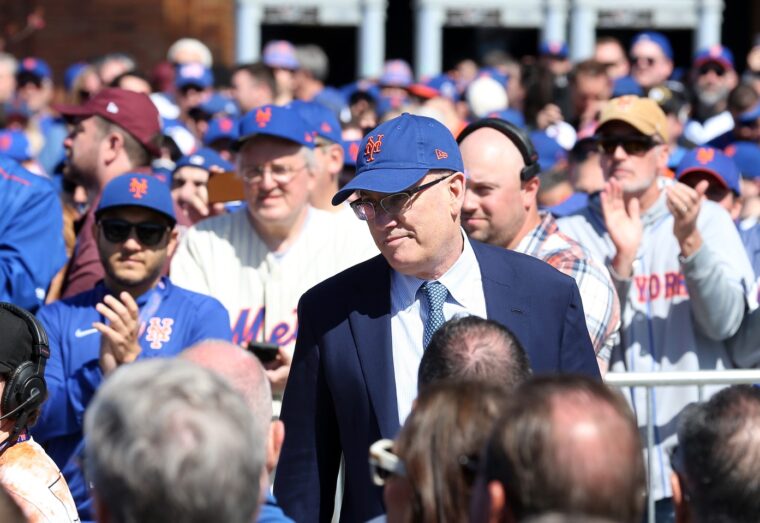
MMO: You were the first significant free-agent signing of the Steve Cohen era. What attracted you to sign with the Mets?
May: One major reason was Steve. You just don’t see excitement like that out of our owners, ever. That was refreshing and I’ve always been looking for ways to get people bought in.
When I was in Minnesota, I was always trying to get walkout songs for relievers and have them do more fun stuff. Be a little more, not edgy, but just take more chances. It’s baseball and it’s supposed to be fun. He (Cohen) exuded that, so that was exciting.
Probably the biggest [reason] was Hef. I’m a big, big fan of Jeremy Hefner. I think he gets it. I think he gets it not only from baseball but from a human level. He’s a guy who if you’re dealing with something like a nagging injury or you’re just not right, I don’t think there’s another person in baseball that understands that more than him and his journey to try to play again. His last four years, I don’t know how he did it. That would’ve been the most frustrating thing ever for me as a player.
He’s just a great guy but he’s also a great baseball mind and he’s learned a lot from a lot of people. He takes input and there’s nothing he brushes off as not useful until he’s really looked into it. I think that’s a great quality to have as a major league pitching coach. [He’s] extremely smart and approachable and I just like him.
I think it’s awesome that he wanted to be here with the organization that gave him his chance and to help turn things around. I think he’s done a very, very good job of making this place a destination for pitchers.
MMO: Whenever I interview current pitchers on the Mets, or guys that have worked with him in the past, all I get are rave reviews of Hefner.
May: He’s really great at answering questions. He gives off the ask me questions vibe. You can be like, ‘Hey, what does this number mean?’ Or, ‘What’s the difference between these two vertical movement metrics?’ He’s always like, “I don’t know why they use that one, because everyone else uses this one. Let me figure out what that one means.” Things like that.
It doesn’t just start with him, the entire analytics department is like that. You can approach any of them and say, ‘In my next report, let’s get these. I know these are more traditional numbers, but this is very specific that I want to know.’
[For example], I want to know where the last 500 swings-and-misses on fastballs have been for this guy. I want to know where those are because no matter how it moves, you’ll see where they don’t like the fastball to be. It probably won’t be everywhere and it’s usually not, and that’s valuable to me because that gives me confidence to throw it and I can miss a little bit and still be okay up there.
That’s what I want to know. They’re all willing and say, “Yes, that’s not in our model but I can add that in addition to our model, something specific that you want to know.” Max’s packet is like every minute, minutia stat broken down from the most traditional to extremely analytical. He does it all.
MMO: So, clearly you’re someone who regularly meets with the Mets’ analytics department?
May: Yeah, they’ve become pretty good buddies of mine. The thing I miss most the last five-six weeks has been not chatting with them all the time.
MMO: I thought you put it best when you chatted with reporters about your injury in early May where you said relievers are in a constant state of “hop-scotching that line” between pitching through soreness and taking a needed rest. You talked about how relievers are never at 100 percent and you have to toe the line between going out there and working through things versus something physically not being right.
May: All we’re doing is staying ahead of things. That’s literally our entire life. Drew Smith had a little thing on his foot in the spring, the stress reaction. That’s not fully gone and it’s something he’s got to keep working on. He said as long as it’s not so painful that he can’t walk or throw, then he’s just got to keep going.
Everyone’s got something. Everyone has a special machine they’re working on for their specific thing.
Kyle Gibson, who I played with a few years ago, had a slight tear in his rotator cuff. He didn’t get it repaired and it was pretty significant. He went down to the baseball ranch and they had some arm path adjustments made and he’s had it ever since. But it doesn’t get inflamed like it used to anymore, so he’s able to work through it. He knows when he’s 36-37 that it’s now probably going to be unavoidable (surgery).
It’s all about how can you get yourself on the field. That’s what athletes do. No ones like, “Wow, I feel great. And there’s nothing to work on.” That’s not how anything works. Every guy is rolling out something or scraping on something or doing something that’s nagging them, but they’re able to work through it. Sometimes that thing just makes you not very good anymore, and you’ve got to take a step back, which is what happened with me.
MMO: You brought up your split-change before and how that was a pitch you were working on. You didn’t get the chance to throw many in games this season, but how do you feel about the pitch so far?
May: I absolutely love it. I threw one to Brandon Crawford in the one save that I got in the doubleheader, and it might have been the second splitter I threw. I hadn’t been getting any swing-and-misses on anything because honestly it felt terrible when I threw my slider and my fastball was not moving the way [I wanted]. The splitter seemed unaffected.
My agent had someone on the team and he said Crawford came in the dugout and was like, “I don’t know what that was. I don’t know what he just threw me. I have to watch it. Does anyone know what that was?” They’re like, “I think it was a splitter.” It wasn’t on the report and they were like, “I didn’t know he threw one.”
I threw one to Paul Goldschmidt and it was absolutely disgusting. I think I got Ketel Marte in Arizona. When I threw it I was like, ‘Jesus!’ We went and looked and it was like a negative one or something, which is an insanely depth-y splitter.
I’ve always been interested in throwing it. I hope it didn’t have a lot to do with the arm, but honestly, before I even threw splitters in a game it wasn’t feeling great.
MMO: In your 2021 recap video on YouTube, you talked about adding a pitch that had a bit more depth to play off your fastball, which it sounds like your splitter can be for you.
May: Absolutely. It’s just at this point I want to feel good and then be confident that what I’m throwing is going to go where I want it to, with the best stuff that I can have whatever that is that day. That’s all I’m really focused on.
But yeah, you’re right. I wasn’t even thinking that I really wanted another swing-and-miss pitch. I just want to pitch this and not have it get crushed if it’s a bad miss for the most part. It might be a hard ground ball, which I don’t have anything that does that. Even my slider’s not hitting on the ground very much. I don’t have a pitch for that. I now have that option as well, which is kind of nice to know that I want a swing-and-miss here, but if it’s not, it might be a double play.
When I threw my fastball, I’m like, ‘This is 100% either going to be a swing-and-miss or the warning track.’ Adding that kind makes you feel more well-rounded. You have more options and more specific scenarios.
MMO: Are you a fan of PitchCom?
May: I love PitchCom. It’s so funny, some people don’t. I love that he (the catcher) can tell me as I’m starting to dig out the rubber or whatever. I can think about it for half a second and not slow the game down. I feel that anxiousness too when I start to slow because I’m just not feeling great or I’m not fully remembering or I’m having a slow day.
It speeds up the game so much, I think everyone should use it. I think that it solves the pitch clock problem. It’s already shaved so much time off games from guys just getting their sign, knowing what they want to do, and standing on the mound and going. I think everyone should give it a shot.
It’s kind of goofy at first. Sometimes [Patrick] Mazeika comes out and because he doesn’t use it that much in the minors, he can’t remember [certain calls]. He’ll press the button and it goes, “Cutter. Cutter. Sinker.” I don’t throw either one of those, Pat. Sorry, try again. [Laughs.]
I get curveball all the time. [Tomás] Nido hits it on accident all the time and it goes, “Curveball.” He just shakes his head. He goes, “Never mind, just wait.” But when we’re on the same page it’s great.
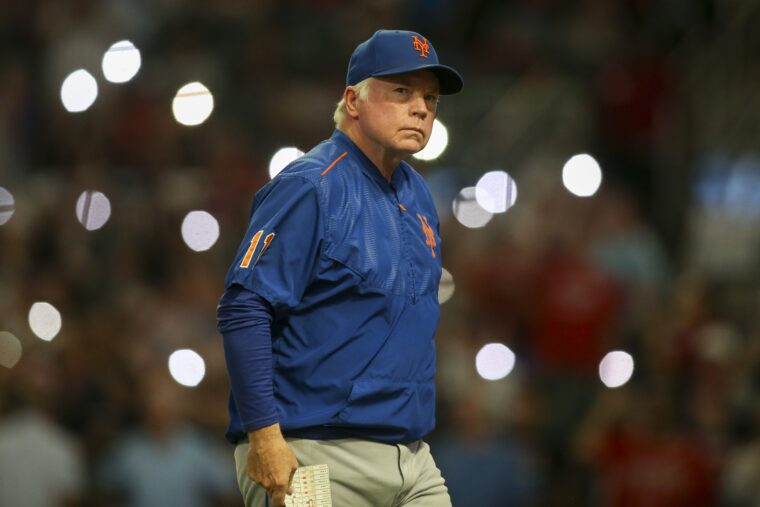
Brett Davis-USA TODAY Sports
MMO: How would you describe Buck Showalter?
May: Buck is the man. I love how he holds a room. That’s one of my favorite things about him, he’s just not worried about all the little [stuff].
I’ve played for managers that are kind of worried about stuff and have some bad pet peeves and things that don’t really matter. That’s something I think gets attributed to “old school guys.” That’s something you assume that they have a couple of things like you’ve got to wear your pants this way because that’s the way it’s done. Buck has none of those things. He’s not like that at all.
You know how Joe Maddon’s very publicly like that? Like I don’t care? Buck is like that behind closed doors. “I don’t really care, guys. Just play the game right. Try your ass off and try to find your advantages wherever you can find them. Just be savvy”.
If you do that and you show a willingness to do that, he loves you. And if you’re a competitor, if you go out, you can tell like you are there to do that job right then and he sees it, then he is willing to just let all the other crap go. Then you add the fact that he’s been in Baltimore, New York, very big markets all over the place. He’s handled the media here. He knows what the New York Post is going to ask him. He’s very good at being like, “That’s dumb. Anyway, next question.”
I love Luis [Rojas] so much too, he’s a great person. He didn’t do that (handling media) very well. We needed that and we were dealing with a lot of non-baseball pointless crap last year.
It was incredible. I was like, ‘We’re adults, why are we talking about this? Why is this being talked about so much?’ We kind of just let them (media) perpetrate it and ask it over and over again. And you just have to be like, “Sorry, I fell asleep. What did you ask again?” And then it’s over. You just have to hit him with one of those once in a while, and Buck’s willing to do that. I love it.
He has the staff around him and they’re all super comfortable with him and his process. There wasn’t a lot of learning that needed to happen. All he had to do is buy-in and you’ll win. And that’s what we’re doing.
MMO: Buck is great with turning questions that could potentially be distractions into something else completely.
May: Yeah. You have to answer the question too, or they will make that the story. He’s good at making it, “I answered the question, it just wasn’t the answer you wanted.” They can go with that. He gave an answer so they can write about that. You gave me something to write about. You can navigate it that way because you don’t have to make media members happy. You don’t have to, they don’t have to be happy. You just have to let them do their jobs a little bit and give them something.
I’m just glad that we have a group of guys that get it too, guys have been around and are pretty savvy as well. For example, I think Francisco Lindor learned a lot last year. I love seeing how big his smile is every time we’re at the park. That’s awesome. He’s always smiling. He was smiling last year too, but you could tell he’s not worn down like he was last year.
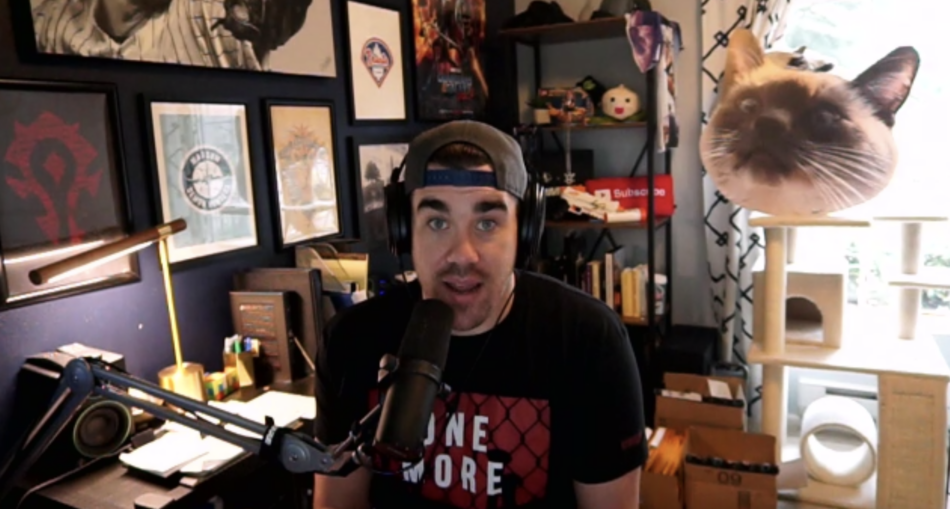
MMO: Your passion for gaming is pretty well-documented and your Twitch account is a lot of fun to watch. Have video games always been a passion of yours, and do other Mets share that with you and play?
May: Video games are a big passion for me. I think that I’ve expressed myself a lot in video games over the years. I was able to be competitive when I want to be competitive or silly when I want to be silly or creative when I want to be creative. I’m just an entertainer by trade, but also by personality.
Right now, gaming for me is literally 100 percent creativity. I don’t play anything competitive at all. I play things that allow me to create things, which I’ve gone off and on with games like that my whole life, and for whatever reason, that’s what I’ve done been on the last year.
There are a lot of other guys that play games in our clubhouse. I know Cookie [Carrasco] plays Call of Duty all the time. He has a teenage son that he’s playing with and it’s a family thing for him. Luis Guillorme plays MLB: The Show. I play The Show sometimes on stream because people like it and I can connect the worlds. And I have, I have input to give on the game, I can comment on the game. Guillorme loves playing competitively. He goes and beats all the streamers.
A bunch of guys play Call of Duty, some of our strength guys play and I know everyone’s just kind of popping into it.
I play fewer games during the season as well and a lot of them just leave it for three months and come back every once in a while. I make time for it for sure, because it’s something I really enjoy.
MMO: Thanks for your time, Trevor. It was great chatting with you.
May: My pleasure. Thanks.
Follow Trevor May on Twitter, @IamTrevorMay


